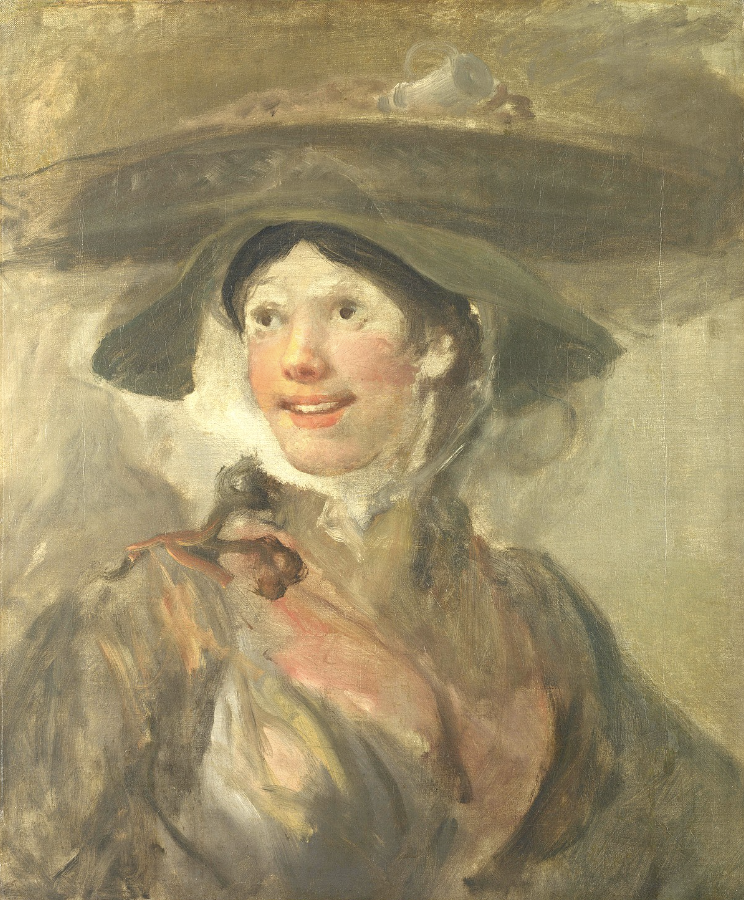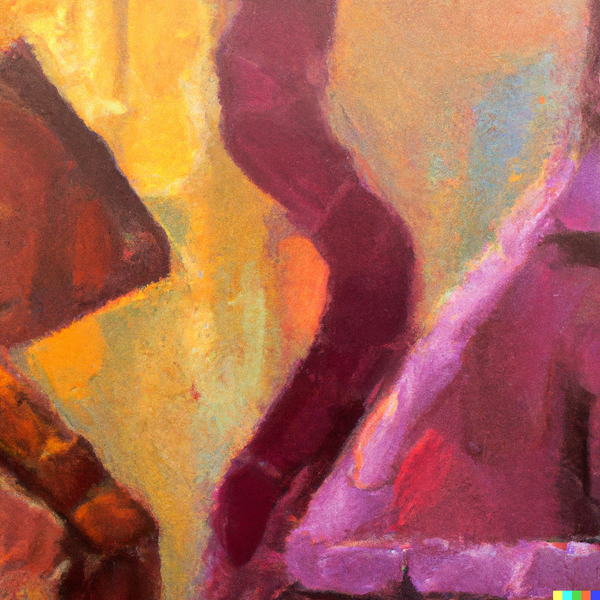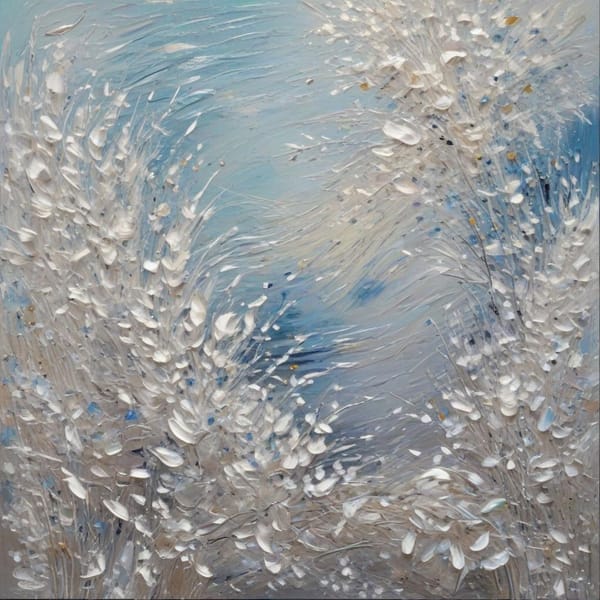the shrimp girl

The Shrimp Girl is a 25 by 20-inch oil on canvas portrait created by William Hogarth (1697 - 1764) between 1740 and 1745. This painting is distinct from Hogarth’s oeuvre of mostly satirical and conversation pieces about modern moral subjects such as Marriage a-la-mode and The Strode Family, respectively. The Shrimp Girl deviates also from the typical romanticised or overly-sentimental portrayals of working-class women in Hogarth's England (Sylvester, 2019). A majority of scholars hold this painting as a glimpse into Hogarth’s creative process and therefore an unfinished painting. Yet there is a substantial minority who suggest that this portrait is a logical end to what could have been Hogarth’s experimentation with new forms and techniques (Burroughs, 1947) as seen in some of its proto-impressionist elements such as loose brush strokes. The concern of this essay is to explore the ramifications of both schools of thought regarding this portrait’s completion status and the varying hypotheses behind Hogarth’s intention in creating it. By adopting a comparative perspective, this essay analyses Cottage Girl with Dog and Pitcher by Thomas Gainsborough (1727 - 1788) and The Strawberry Girl by Sir Joshua Reynolds’ (1723 - 1792), both of whom were Hogarth’s contemporaries and whose works were mostly of aristocrats. These paintings by Gainsborough and Reynolds portray young girls from the working class, hence useful in understanding how their established hold on highly-regarded eighteenth-century portraiture led them to approach and depict the lives of the working class in a much less realistic light as compared to Hogarth.
The Shrimp Girl is notable for its enigmatic features, in particular, the sitter’s wide-open eyes and flushed pink cheeks. She exhibits a toothy smile, which is noteworthy as that was uncommon in not only portraits of the lower class but also portraits in general (Meek, 2000). There were much more socially-charged incentives for not attempting this pose, even though holding a grin for the duration of a painting session was reason enough. Most paintings were of the upper-class who aimed for power and authority to come across in their depictions and for whom smiling would therefore be unsuitable. Yet even in portraits of the working class, smiling would appear incoherent with prevailing narratives about their lives which were only portrayed with themes of suffering and helplessness (Emery, 1978). Hogarth’s subject appears lively though, in part due to her dynamic pose – a quality that was lacking in typical portraits of the working class in idealised and inauthentic settings. The girl in Hogarth’s painting has an independent agency that comes across very naturally which is why most scholars agree that she was painted from life (Paulson, 1971). Weber (1995) echoes this while writing of the “boisterous realism” of the painting in depicting an everyday Londoner with immense positivity, a natural sentiment, and character unlike Gainsborough’s Cottage Girl With Dog and Pitcher, for instance. The girl in Gainsborough’s portrait is tilting her head and her eyes appear sunken. Her lips are sealed and her shoulders are dropped almost as if she was caught at the end of a sigh. Unlike Hogarth’s subject, Gainsborough’s sitter is much younger and exhibits melancholic energy as she casts a dull stare at something outside the frame. The cottage girl is depicted in a romanticised manner in order to tell a sentimental story – an element of what were known as “fancy pictures'”, that is, idealised portrayals of everyday scenes in a sentimental story-telling manner (Thomas Gainsborough, n.d.). Even though Gainsborough did not paint these paintings with a particular moral point, the cottage girl’s portrayal still aligned with what was the common perception at the time regarding the misery in the lives of country people, a pattern that Hogarth was perhaps attempting to break by painting The Shrimp Girl.
Under the assumption that The Shrimp Girl is a finished portrait, it may appear rather rushed due to the spontaneity with which it was painted. This is visible in the loose brushwork that Hogarth employed (Hubbard, 1932). However, if we consider this work unfinished, then it reveals that Hogarth took pains to humanise and individualise this woman who lives in such a fast-paced city as London even through his composition and technique in the sketch (C.J.H, 1903). The sitter wears a hunter-green oilskin cloak with some light vermillion around her cleavage area. There is also a much stronger dark-brownish stroke that could be an extension of her tied hair on her right shoulder, as seen in other versions of the portrait (All Painters, n.d.). The sitter wears a white ribbon under her sou’wester, which is a hat that fishermen wore at that time (National Gallery, n.d.). English fishing was mainly a male activity, so it was the wives and daughters of fishermen who served as fishmongers in areas such as the Billingsgate Fish Market where Hogarth supposedly painted this portrait (National Gallery, n.d.). This painting serves as evidence that women were industrious members of society even during Hogarth’s time and they were not necessarily suffering given the shrimp girl’s lively expression. Gainsborough’s girl, though, walks barefoot with a broken pitcher in her right hand. She is carrying a dog in her left hand and her clothes are ragged, qualities meant to elicit empathy and pity from her audience because they add to her rustic innocence. While the shrimp girl’s background echoes a lighter shade of her clothes’ greenish fabric, the cottage girl’s background is a sky packed with clouds, most of which are greyish and therefore add to the gloominess of the portrait. This despondent element was very much expected in paintings of the eighteenth-century working women, as discussed in the proceeding section.
Hogarth depicts a clear essence of beauty in The Shrimp Girl – a different kind of beauty, unlike the helplessness with which women of eighteenth-century England were portrayed (Baudino & Carré, 2005). Hogarth’s shrimp girl appears in a single-subject portrait while carrying a basket with light-brownish items that most scholars have suggested could be shrimp, hence the name The Shrimp Girl. There is also a white measuring scoop and darker items on the right of it, which some critics have described as mussels or clams. Through the care that Hogarth takes to suggest great detail, he suggests that everyday women were worthy subjects of portraiture too. Crucially, Hogarth demonstrates that they deserved to be portrayed in authentic light without condescension, which is in contrast to other idealised portrayals of the working class as Reynolds did with The Strawberry Girl. Like Gainsborough’s sitter, Reynolds’ subject is a much younger working-class girl yet she is painted in a decorative style and not with the same sentimental depiction as the cottage girl. The child in The Strawberry Girl is a real-life strawberry seller portrayed in a costume and a guise having been removed from her usual setting and placed instead in Reynolds’ studio and dressed in a cream-white dress and a very curious-looking light-brown turban. She has makeup on her face which is visible in her pale face as compared to her much more tan hands and the pinkish blush on her cheeks and around her eyes. Putting makeup on a young girl from the working class may be interpreted as Reynolds patronising his subject and ironically revealing how she is at the mercy of her viewers and her society at large (Emery, 1978). Her hair is carefully arranged into bangs and the rest is hidden in the turban, unlike the shrimp girl’s hair which appears roughly tied and hangs below her sou’wester. By attempting to portray the strawberry girl outside her usual setting, Reynolds also exposes the uneasiness that British society had with portraying female workers as they were. Hogarth escapes this trap by portraying the shrimp girl on her own terms and for her own worth.
Hogarth was a social painter. This explains why he successfully captured more realistic aspects of the life of this working-class woman. Even though The Shrimp Girl cannot be pigeon-holed into either Hogarth’s satirical content or his conversation pieces, the skills he sharpened through those works gave him a unique understanding of the lives of Londoners outside his social class. In The Shrimp Girl, he uses elements such as the line of beauty which he expounded on in his book “The Analysis of Beauty”. This line is a serpentine line that guides the eye in viewing an image in a pleasing manner (Hogarth, 1753); a manner that brings a portrait’s character to life. In The Shrimp Girl, this line of grace runs from the sitter’s ear that appears on the right side of the portrait, curves along her jawline, and traces the edges of her right shoulder. The right side of her hat echoes the same properties of the line of beauty. Hogarth uses cross-hatched brushstrokes to capture details of her basket, whose oval shape was often associated with familiarity with the sitter. Even though this girl may have been a complete stranger to Hogarth, perhaps this painting hints at his understanding of the working class on a much more intimate level unlike his contemporaries Gainsborough and Reynolds, whose works consist of only a handful of paintings of non-aristocrats. Hogarth had several of his works that were in dialogue with the working class such as Gin Lane and Beer Street which supported the gin act of 1751 as well as his painting Heads of Six of Hogarth’s Servants. He created space for the working class to be seen, heard – and remembered – in a world where there was little room for them to do so (Emery, 1978), especially in a positive and realistic light. This is why some critics believe that The Shrimp Girl is an embodiment of London (Jones, 2001). She stands for the working class who go unseen even though they are the very lifeblood of the city even today. This is affirmed by the art critic Michael Billington’s quote, “Hogarth was supremely a social painter and London was his canvas” (William Hogarth, n.d.).
London is known for its picturesque nature, which Mount (2021) advances is a main characteristic of The Shrimp Girl dubbing it as one of Hogarth’s most picturesque masterpieces. The broad yet light brushstrokes observed in the painting were not a technique observed in finished paintings in eighteenth-century England. This was a slowly growing movement in other parts of Europe, especially among the Venetians and the French towards the end of the 1700s (Hubbard, 1932). Hogarth uses heavy brushstrokes in The Shrimp Girl to signify the subject’s vitality and great energy by creating a sense of movement. This would become characteristic of impressionist art in the nineteenth century that caught people “in the moment” (Uglow, 2011). The shrimp girl’s garment appears broadly unblended as the hunter-green cloak and her inner vermillion garment colours somewhat clash, without clear demarcations or colour transitions. Hogarth also probably sketched this outside while in the open, and that too would later be an aspect of impressionist art (Rowntree, 1994). The simple fact that the shrimp girl’s composition and subject matter were against what was classic in Hogarth’s time convinces some critics that Hogarth was ahead of his time that some refer to him as England’s first impressionist (Uglow, 2011). This is backed up by the fact that Hogarth’s satirical work captured the world that he lived in as it was, hence adopting proto-impressionist elements would make sense for his career trajectory (Burke, 1977). Hind (2013) is one of the scholars who suggest that perhaps these features of The Shrimp Girl were intentional in that this work was some sort of a preview as to what impressionists would do later in the nineteenth century. Yet most scholars agree that The Shrimp Girl is an unfinished portrait and in fact a repetition of the past. In doing so, they compare Hogarth’s work to The Milk Maid by Johannes Vermeer dated between 1657 and 1658. This comparison affirms how flexible and versatile Hogarth was in his style. Nevertheless, the strongest reason for classifying this portrait as unfinished is that the lower two-thirds of the sitter’s face are much more developed in composition compared to the rest of the face and the portrait. The brushwork around her nose area and her cheeks is much more sophisticated in that there are smoother colour blends as well as a more careful lighting technique. There is a shadow on the left side of her nose, for instance, and the areas at the edges of her lips are darker because she is smiling. These developments hint to the audience that at some point, Hogarth had intentions of adding much more detail as he painted over the sketch we see today. Uglow (2011) writes, “In The Shrimp Girl, the act of painting is the picture”; by seeing this unfinished work, we get to see the process of painting unveiled. This means that even the creation of art itself is art and should be appreciated. It makes much more sense to suppose that Hogarth was aiming at a different level of painting than what we see today so we can receive it as a study and behind-the-scenes into his artistic process.
Hogarth has one other unfinished work that was issued posthumously namely, The bench (the second state). Considering this portrait as well as all other paintings by Hogarth that we have access to, The Shrimp Girl truly stands out in its simplicity, intricacy, and its fitness, which are three out of six principles of beauty Hogarth discusses in his Analysis of Beauty. There is almost no doubt that if he finished it, this painting would be even more prominent than it is now while on display at the National Gallery in London after being bought in 1884 for two hundred and sixty-two pounds ten shillings. Before that, it was bought from Mrs. Hogarth in 1790 for four pounds and ten shillings, who also used this portrait as evidence that Hogarth could indeed paint flesh contrary to the criticism he received. She sold it in a James Christie’s (1730 - 1803) catalog which was where it got the name The Shrimp Girl. Before that, it was still in Hogarth’s studio, in which it could have either been work under construction or set aside as a painter’s experimentation canvas. The truth is, we may never know the validity of either of these assumptions, just as much as we cannot fully imagine what The Shrimp Girl would look like if Hogarth were to complete it. Nevertheless, the fact that even an unfinished piece allows so much room for analyses of both content, comparison, and historical context is a testament to the great artistry of William Hogarth and the wonders of art even in its raw state.
Works Cited
All Painters Online Art Gallery. (n.d.). The Shrimp Girl - William Hogarth. https://allpainters.org/blog/the-shrimp-girl-william-hogarth.html
Baudino, I., & Carré, J. (2005). The Invisible Woman: Aspects of Women's Work in Eighteenth-Century Britain (1st ed.). Routledge. https://doi.org/10.4324/9781315238876
Burke, J. (1977). Ronald Paulson. The Art of Hogarth, London, Phaidon, 1975. 204 pp., 172. RACAR: Revue d'art canadienne/Canadian Art Review, 4(1), 47-49.
Burroughs, L. (1947). Hogarth, Constable, Turner. The Metropolitan Museum of Art Bulletin, 5(5), 125–130. https://doi.org/10.2307/3257301 [ahead its time]
C. J. H. (1903). [Review of William Hogarth, by A. Dobson]. The Burlington Magazine for Connoisseurs, 1(2), 261–263. http://www.jstor.org/stable/855598
Emery, R. (1978). Ronald Paulson," Emblem and Expression: Meaning in British Art of the Eighteenth Century"(Book Review). The Eighteenth Century, 19(1), 84.
Hind, C. L. (2013). Hogarth. Good Press.
Hogarth, W. (1753). The analysis of beauty: Written with a view of fixing the fluctuating ideas of taste. Georg Olms Verlag.
Hubbard, H. (1932). William Hogarth, the Founder of English Painting. Journal of the Royal Society of Arts, 80 (4139), 437-459.
Jones, J. (2001, Sep 15). The Shrimp Girl, William Hogarth (c. 1745). The Guardian. https://www.theguardian.com/culture/2001/sep/15/art
Meek, J. (19 Jul 2000). Smile please: how an 18th century portrait gave birth to the power grin. The Guardian. https://www.theguardian.com/uk/2000/jul/19/jamesmeek
Mount, F. (2021). Leading the eye a chase: The principles of William Hogarth's art. TLS. Times Literary Supplement, (6192), 3-6.
National Gallery, London. (n.d.). William Hogarth: The Shrimp Girl. https://www.nationalgallery.org.uk/paintings/william-hogarth-the-shrimp-girl
Paulson, R. (1971). Hogarth: His Life, Art, and Times. Yale University Press, 1, 458
Rowntree, M. (1994). Indexing The Image (Doctoral dissertation, Loughborough University of Technology).
Sylvester, J. (2019). Mrs Rundell and the Milkmaid.
The Art Story. (n.d). Thomas Gainsborough. https://www.theartstory.org/artist/gainsborough-thomas/
The Art Story. (n.d). William Hogarth. https://www.theartstory.org/artist/hogarth-william/
Uglow, J. (2011). William Hogarth: A Life and a World. Faber & Faber.
Weber, C. B. (1955). Collaborative Teaching Techniques in Philosophy. The Journal of General Education, 8(2), 120-125.





